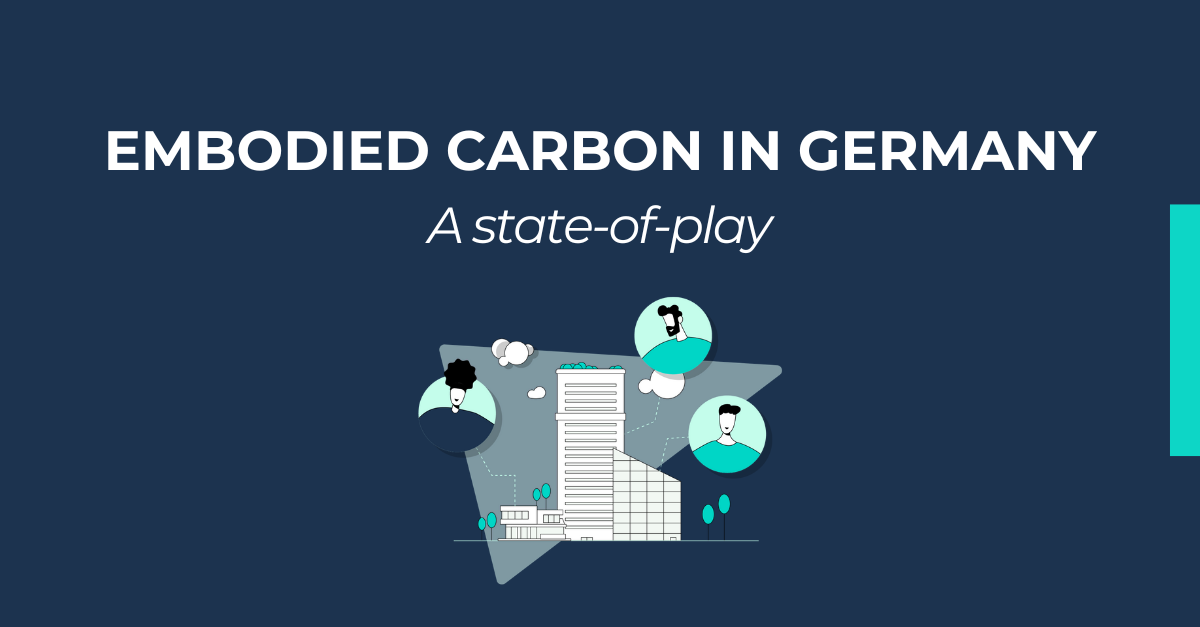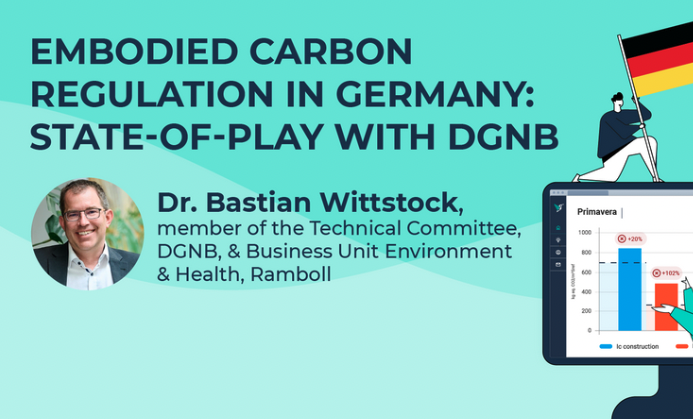Germany is at a pivotal moment in its journey toward decarbonizing the construction sector. While a fully binding regulatory framework for embodied carbon is not yet in place, the mechanisms and initiatives currently being implemented provide a robust foundation for future mandates. These initiatives represent both opportunities and challenges for stakeholders across the construction industry.
The current landscape
Germany’s focus on life-cycle assessment (LCA) in construction dates back to the founding of the DGNB in 2007. From the outset, LCA has been integral to the DGNB certification system, emphasizing the environmental performance of buildings over their entire life cycle. This early adoption has cultivated a high level of expertise within the industry, supported by tools and datasets such as ÖKOBAUDAT, the national public database for material data.
More recently, the German Federal Ministry for Housing, Urban Development, and Building has introduced the Qualitätssiegel Nachhaltiges Gebäude (QNG), or the Quality Seal for Sustainable Building. By making this label mandatory for projects seeking public subsidies (encompassing both residential and non-residential buildings), the Ministry reaffirmed its commitment to stronger environmental criteria. In addition, to qualify, projects must achieve at least a DGNB Silver certification and meet specific QNG requirements, including thresholds for carbon emissions and primary energy consumption.
QNG’s approach includes a forward-looking component: building-specific climate action roadmaps. These plans outline measures to achieve climate neutrality by specified deadlines, encouraging early implementation of emissions reductions rather than deferring them through subsequent renovations.
Threshold values - a game changer
A significant development in Germany’s regulatory framework is the introduction of mandatory threshold values for carbon emissions and primary energy. For residential buildings, the carbon threshold is 24 kg CO₂e/m² per year over a 50-year life cycle, inclusive of user-related electricity consumption. Non-residential buildings follow a customized approach based on their specific energy profiles. These benchmarks are ambitious and represent a step-change in integrating sustainability into construction practices.
However, meeting these thresholds is challenging, particularly for projects using generic data from ÖKOBAUDAT. While this database provides a consistent baseline, its reliance on generic data can limit accuracy. Incorporating Environmental Product Declarations (EPDs) - verified, product-specific datasets - will become increasingly important. This shift aligns with upcoming European requirements under the revised Construction Products Regulation, which will mandate the disclosure of LCA results for building materials.
The path to regulation
Although Germany’s embodied carbon requirements are not yet enshrined in law, the QNG system effectively acts as a pre-regulatory framework. Its alignment with the European framework and the Energy Performance of Buildings Directive (EPBD) positions Germany well for an eventual transition to mandatory whole-life carbon assessments in building permits.
The Federal Ministry has signaled its intention to expand ÖKOBAUDAT in 2024, streamlining the inclusion of EPDs and facilitating compliance with QNG requirements. These steps are vital for ensuring that LCA tools and datasets are readily accessible and quality-assured, reducing barriers to adoption.
Challenges and Implications
For industry professionals, the current system offers a preview of what future regulations might entail. While the QNG provides a structured pathway, its complexity can be daunting, especially for small and medium-sized enterprises. The approval process for LCA tools and the need for consistent data quality assurance add further layers of difficulty.
Additionally, the upcoming federal elections could influence the pace and scope of regulatory developments. However, the underlying infrastructure for LCA and embodied carbon calculations is well-established, making it likely that any future government will build upon these foundations.
Where we stand
Germany’s approach to embodied carbon regulation is characterized by incremental but impactful steps. While Germany has not yet introduced binding embodied carbon regulations comparable to those in Denmark or France, the QNG scheme and its alignment with DGNB standards set a clear trajectory for the future. By embedding life-cycle assessments as a core principle and facilitating industry familiarity with these calculations, Germany is positioning itself for the regulatory changes anticipated under the EPBD.
To know more about embodied carbon regulations in Germany, watch our exclusive webinar in collaboration with Dr. Bastian Wittstock, member of the Technical Committee of the DGNB and Technical Director Decarbonization within Ramboll's Business Unit Environment & Health.



.png)

